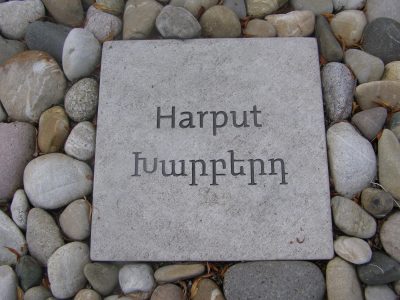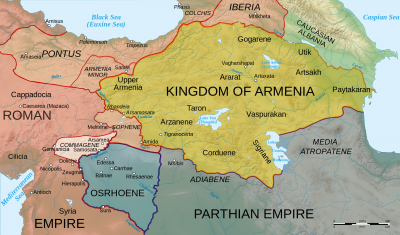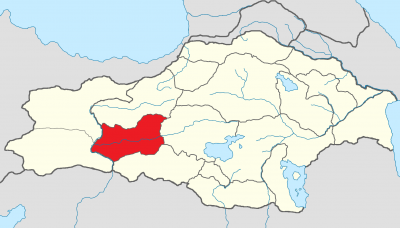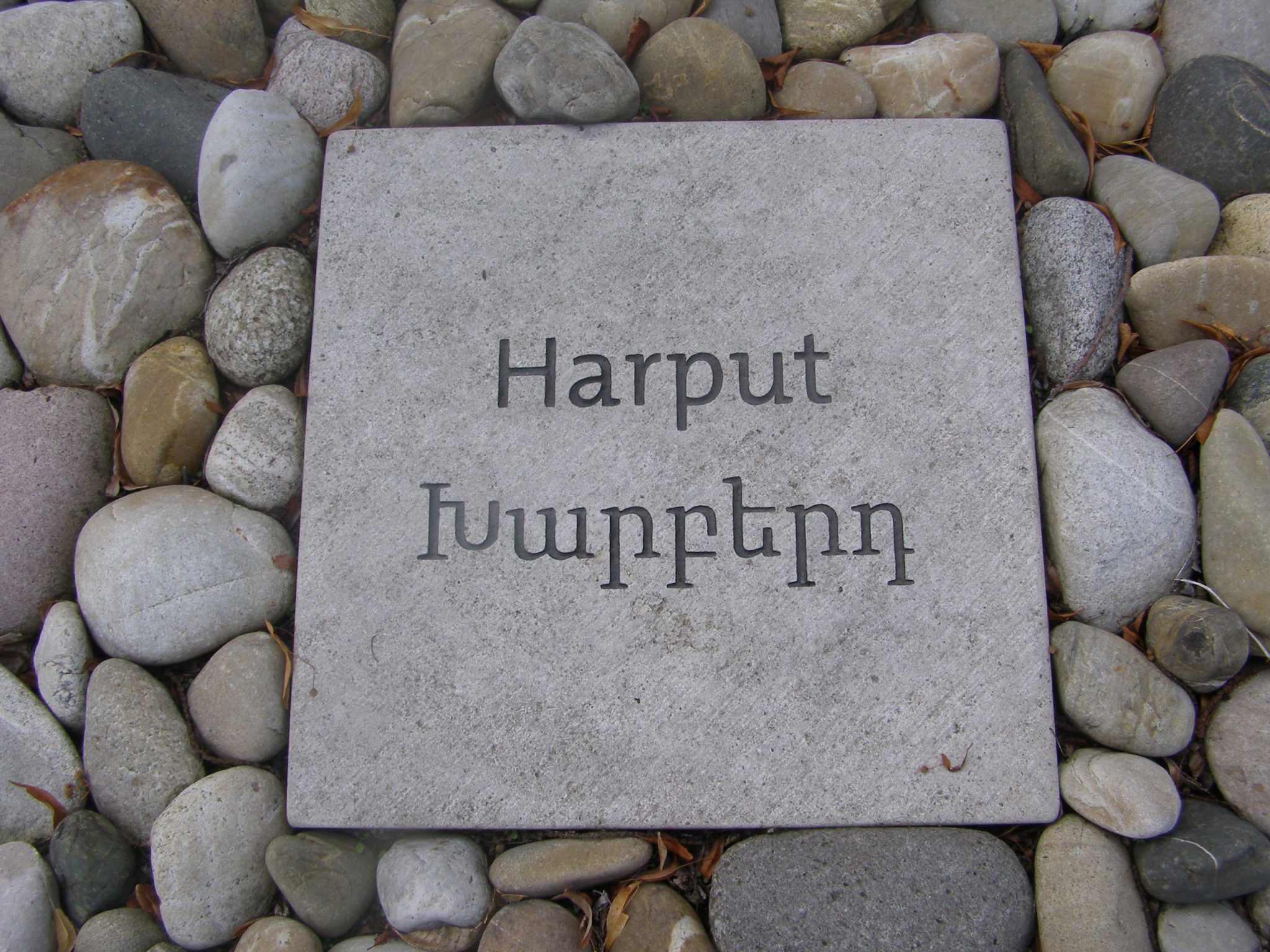
Administration
After the proclamation of the ‘vilayet nizamnamesi’ (province regulation), together with Harput Mamüret ül-Aziz (Mezre) formed a mutasarriflik, first attached to Diyarbekir and then independent (1875), until 1878, when it was re-organized as a separate province of same name.(1) Mezre (also: Mezereh) is today’s Elazıg, which in Ottoman times formed the lower town of the double-provincial capital Harput-Mezre of the Mutesarriflik Mamuret-ül-Aziz. The much older Harput, an Armenian foundation (Kharberd) in the north-east of Elazıg, now forms an insignificant settlement.
The sancak comprised the five kazas Harput-Mezre (Mezere), Keban Maden, Arapgir (Arabkir), Pötürge, and Akn (Agn; Trk.: Eğin).
History
Historically, the sancak of Harput corresponds to the district of Andzit (Անձիտ) or Hanzit (Grk.: Anzetinis, Xanzit, Syriac: Anzit or Hanzit) in the ancient Armenian province of Dzop’k’ (also: Tsopk; Grk.: Sophene).
“In the twelfth century the Turkoman Artuqid house, and in the thirteenth century the Ayyubids and the Seljuks dominated Harput. In 1230 it was occupied by the Mongols, but three years later (1233-4) the Seljuk Sultan Ala’ al-Din Kayqubadh conquered it. The history of the Seljukid period is confused and almost unknown. In the middle of the fourteenth century Harput was governed by the Turkoman tribes of Eretna and Dhu’l-Qadir. In 1365-6 the Egyptians seized it, and towards the end of that century the monarch of Sivas, Qadi Ahmed Burhan al-Din took possession of it and defended himself there against the Aq-Qoyunlu [Ak Konyunlu] Qara [Kara] Yuluk Uthman Beg.
The Mongol Emperor Timur in his return from the campaign of Anatolia, subjugated Harput also to his dominion. After Timur the tribe of Dhu’l-Qadir ruled there again, and in the days of Melik Arslan the Aq-Qoyunlu Uzun Hasan occupied it. In 1507-8 it came under the rule of the Safawi Shah Ismail, but the vizier of the Sultan Selim I, Biyikli Mehmed Paşa after the conquest of Diyarbakir (1515-17) brought Harput also under the immediate government of the Sublime Porte.”[2]
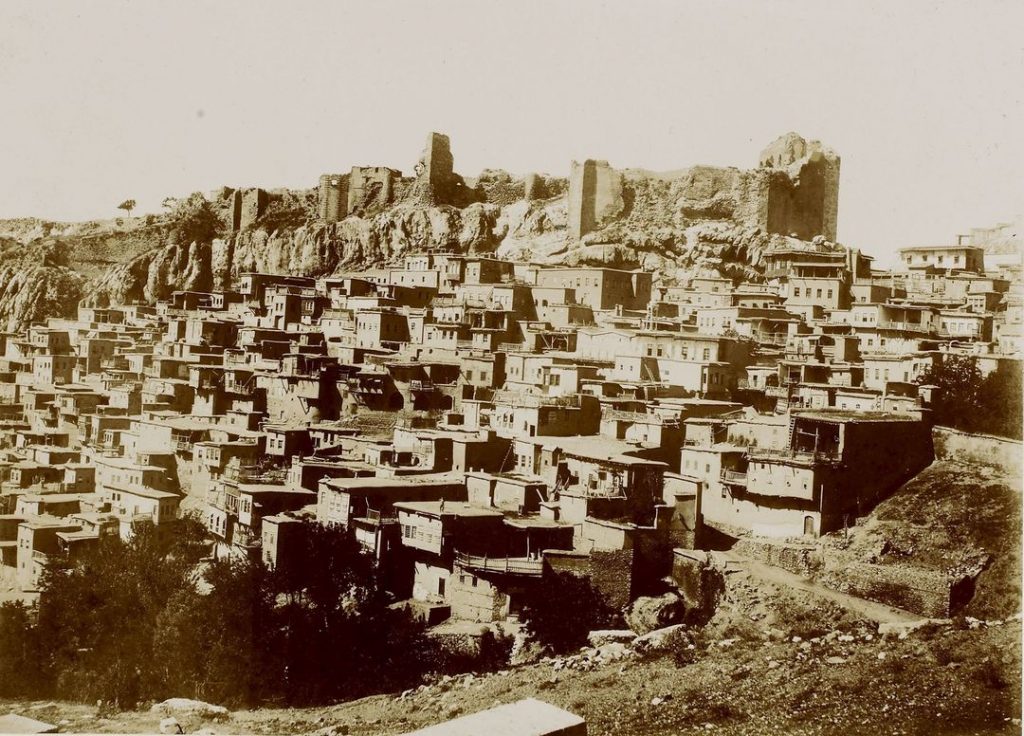
Armenian Population
According to the pre-war census of the Armenian Patriarchate of Constantinople, there lived 68,877 Armenians in the sancak of Harput-Mezre, mostly in the kazas Harput-Mezre (39,788), Eğin/Akn (16,741) and Arapgir/Arabkir (10,880).
The French geographer Vital Cuinet gave the total for the Armenian population of the sancak of Harput-Mezre with 45,348; of these, 39,343 were Armenian Apostolic Christians, 5,100 Armenian Protetants, and 905 Armenian Catholics.[3] In 1912, the Armenian Apostolic Patriarch Malachia Ormanian gave the overall Armenian population of the Harput-Mezre sancak with 51,000.
